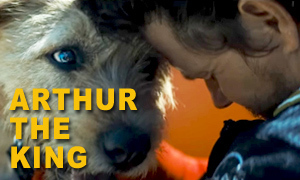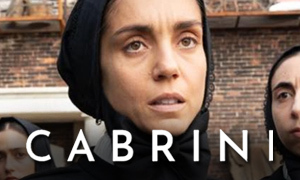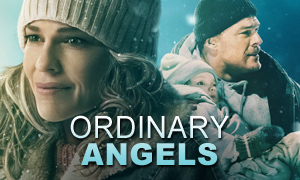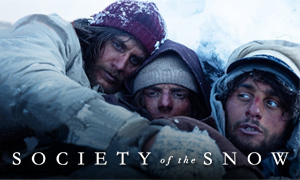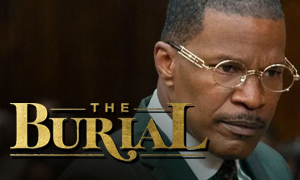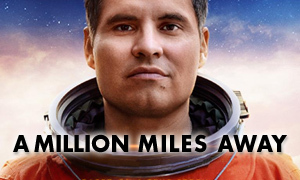Jesus Revolution: History vs. Hollywood
Joel Courtney
Born: January 31, 1996
Birthplace:
Monterey, California, USA
Greg Laurie
Born: December 10, 1952
Birthplace: Long Beach, California, USA
Bio: Found Christianity through Lonnie Frisbee and Chuck Smith
Anna Grace Barlow
Born: July 17, 1994
Birthplace:
Birmingham, Alabama, USA
Cathe Martin
Born: January 30, 1955
Birthplace: Long Beach, California, USA
Bio: Future Wife of Greg Laurie
Jonathan Roumie
Born: July 1, 1974
Birthplace:
New York City, New York, USA
Lonnie Frisbee
Born: June 6, 1949
Birthplace: Costa Mesa, California, USA
Death: March 12, 1993, Orange County, California, USA (AIDS complications)
Bio: Street Preacher Influential in the Jesus Movement
Kelsey Grammer
Born: February 21, 1955
Birthplace:
St. Thomas, U.S. Virgin Islands
Pastor Chuck Smith
Born: June 25, 1927
Birthplace: Ventura, California, USA
Death: October 3, 2013, Newport Beach, California, USA (lung cancer)
Bio: Pastor of Calvary Chapel
Julia Campbell
Born: March 12, 1962
Birthplace:
Huntsville, Alabama, USA
Kay Smith
Born: June 14, 1927
Death: August 13, 2021, California, USA
Bio: Wife of Pastor Chuck Smith
Kimberly Williams-Paisley
Born: September 14, 1971
Birthplace:
Rye, New York, USA
Charlene McDaniel
Born: November 13, 1928
Birthplace: Friendship, Arkansas, USA
Death: January 2, 2003
Bio: Greg Laurie's Mother
What was the "Jesus Revolution"?
The Jesus Revolution true story reveals that it was a national spiritual awakening that began within a community of teenage hippies in Southern California and spread across the country. Also called the "Jesus Movement," it gained traction after members of the group, in particular Lonnie Frisbee (played by The Chosen's Jonathan Roumie), met a pastor named Chuck Smith (portrayed by Kelsey Grammer), who opened the doors of his church, Calvary Chapel, to the wandering youth in hopes to bring them closer to God. As the revolution expanded, the members of the movement were nicknamed "Jesus people" or "Jesus freaks." One characteristic of the members was that they largely rejected vices like alcohol and drugs, which had been commonly associated with hippies, and replaced them with religion.
Early on in Chuck Smith's Calvary Chapel movement, a woman at the church rented a small house for young people to live in, and soon after, a realtor offered a motel he owned to be used as another commune (Calvary Chapel Magazine). A few of the young people even stayed in Chuck Smith's home for a time. While most young people in the Calvary Chapel movement did not live in communes, many other young people in the Jesus Movement did. Like in the film, as Calvary Chapel Church could no longer hold the rapidly expanding congregation, they erected a large tent in 1971 that became a hub of the Jesus Movement for two-and-a-half years. "The Tent" as it was known held three Sunday morning services, concerts on most nights, and Bible studies.
What year was the Jesus Revolution?
A Jesus Revolution fact-check reveals that the evangelical Christian movement began in the late 1960s on the West Coast of the United States. It spread across North America and reached Europe and Central America before it died off in the late 1980s, with the most impactful part of the movement lasting not more than a decade. It spawned the formation of several denominations and organizations, as well as the creation of youth groups for young worshippers. It also influenced the evolution of the modern-day Christian left and Christian right. The music associated with the Jesus Movement, dubbed "Jesus music," eventually evolved into the contemporary Christian music industry.
Is the Jesus Revolution movie based on a book?
Yes. Jesus Revolution is based on Pastor Greg Laurie's book Jesus Revolution: How God Transformed an Unlikely Generation and How He Can Do It Again Today, which tells the story of the Jesus Movement in California in the 1970s. Laurie is portrayed by Joel Courtney in the film.
Were members of Chuck Smith's church hesitant to welcome hippies into their congregation?
Yes. An investigation into the Jesus Revolution fact vs. fiction reveals that Pastor Chuck Smith's church, Calvary Chapel, was sort of dying at the time and struggling to attract new members. It's true that many of the older, more conservative members clashed with the young hippies that Smith was welcoming in, disagreeing with them regarding their views on life and religion. The real story confirms that some of the older members even quit the church. As in the film, the young people gave Calvary Chapel Church new life and many new members. However, at the same time, they were altering traditional Christian worship by blending it with their hippie sensibilities, which certainly had its detractors.
Is the Jesus-looking hippie street preacher in the movie, Lonnie Frisbee, based on a real person?
Yes. As indicated by the photos at the top of the page, Lonnie Frisbee, a hippie who embraced Christianity, was indeed a real person. Like in the Jesus Revolution movie, he helped bring thousands of kids to Christ by way of his charismatic preaching. Fans of The Chosen TV series will immediately recognize the actor who portrays Frisbee, Jonathan Roumie, who interestingly plays Jesus in that series.
Did Chuck Smith baptize some of the hippies in the Pacific Ocean?
Yes. The true story confirms that the ocean baptisms indeed happened. The filmmakers returned to the location of the real-life baptisms, which took place at Pirates Cove in Southern California. Producer Kevin Downes said that a real pastor who was part of the actual movement was present for the beach scenes and even performed several real baptisms in the ocean while he was there (presumably on crew members who had found Jesus during their work on the movie). -Liberty University Panel
On an interesting side note, Kelsey Grammer wasn't the only actor attached to the role of Chuck Smith. Comedian Jim Gaffigan had been initially cast to play Smith but was replaced by Grammer.
Did Greg Laurie convert to Christianity after meeting street preacher Lonnie Frisbee?
Yes. In answering the question, "Is Jesus Revolution accurate?" we discovered it's true that Greg Laurie hadn't been raised with religion as part of his life. "My mother was beautiful. She literally was a dead ringer for Marylin Monroe. She was married and divorced seven times," Laurie told Kirk Cameron on the TBN show Takeaways. "She was a raging alcoholic, and when I say alcoholic, she passed out every night. She would get in raging drunken brawls with her husbands and boyfriends in between. So I had to grow up really quick." Laurie said that he bounced around somewhat, living with his mom for a time, his grandparents for a time, and was sent to military school. "So, it was a very unusual upbringing, but it got me searching for answers at a very early age." Instead of wondering if he was going to make the football team like other boys his age, he sat around and wondered about the meaning of life, believing it had to be better than what he had experienced.
In the late 60s when he was around 16 years of age, Greg Laurie became involved in the drug culture, which he was told would expand his consciousness and make him more aware. "I started smoking marijuana pretty much every day," said Laurie, "and taking LSD." His frequent drug use went on for about a year and a half until one day he experienced a bad trip. He heard a voice telling him he was going to die. "I looked in the mirror and I saw my face melting and I saw my skull exposed. I was so scared, so I thought, 'I don't wanna do drugs anymore. I hate this. I hate this life I've chosen.'"
Like the film, Greg Laurie met the charismatic hippie street preacher Lonnie Frisbee (portrayed by Jonathan Roumie) on the campus of Harbor High School in Newport Beach, California in 1970. A pretty girl who was a "Jesus freak" had caught his attention and in trying to get close to her, he found himself sitting on the lawn with a group of Christians and ended up hearing Lonnie Frisbee preach. Captivated by Frisbee's message, Laurie rediscovered his faith and asked Christ to come into his life. He then began attending Pastor Chuck Smith's Calvary Chapel Church and eventually led a Bible study with 30 attendees. This gave way to the formation of an affiliate church, Harvest Christian Fellowship, which has become one of the largest churches in the country.
Did Lonnie Frisbee prophesize that Greg Laurie would one day preach to thousands of people?
According to Greg Laurie, this moment in the film indeed happened in real life. "I was kinda hanging around with him for a few months after my conversion," Laurie said while speaking to Christian rapper Ruslan KD on his Bless God Studios YouTube channel. "[Lonnie] was praying for some people, and I was just standing there to the side, and he turns to me and he says, 'The Lord just told me you're gonna preach to thousands of people around the world.' I'm like dumbfounded. I didn't even preach a single sermon [at that point]. I mean, I drew a cartoon booklet. That was my claim to fame. So, this was really surprising."
Greg Laurie would go on to start his own church, Harvest Christian Fellowship, which has become one of the largest churches in the country, with a congregation of 15,000. Just as Lonnie Frisbee predicted, Laurie has preached to thousands of people. In addition, his large-scale evangelistic events called Harvest Crusades have been attended by more than six million people and his TV programs have reached millions more. -Harvest.org
During the filming, was actor Jonathan Roumie the same age that Lonnie Frisbee was when the real-life events unfolded?
No. The real Lonnie Frisbee was much younger than actor Jonathan Roumie was at the time of filming. In fact, Roumie, who was approximately 47 when the movie was filmed, is more than double the age of Frisbee, who was in his early 20s at the time of the real-life events.
Were Pastor Chuck Smith and Lonnie Frisbee controversial figures?
Yes. Anyone who has dug into the Jesus Revolution true story will understand that there is a certain amount of controversy around both Chuck Smith and Lonnie Frisbee, who are portrayed in the movie by Kelsey Grammer and Jonathan Roumie. Pastor Chuck Smith falsely predicted that the world would end by 1981 at the latest. When New Year's Eve passed in 1981 and the end didn't happen, a number of baffled followers left the Calvary Chapel movement. Still, despite Smith's flaws, the movement he helped launch brought thousands of young people to Christ. His church grew to encompass an international family of more than 1,700 churches around the world (CalvaryChapel.com).
Lonnie Frisbee led a bit of a double life. He would party on Saturday night and preach on Sunday morning. In fact, he got his unofficial start in evangelism in 1967 at age 17 by reading the Bible to those around him while tripping on LSD. Frisbee was only involved in the Calvary Chapel movement for a short period but was described by Greg Laurie as the "spark" that helped launch it. Frisbee was also a semi-closeted gay man who died of AIDS-related complications in 1993.
In an interview with Ruslan KD, Greg Laurie said that Lonnie Frisbee had fallen away from the church to some degree after leaving the Calvary Chapel movement. Initially, Frisbee had moved to Florida to work on his marriage to Connie Bremer, which ended in divorce in 1973. "He fell away. So, okay, that may trouble some people," said Laurie. "'Why are you making a movie about Lonnie Frisbee?' It's not a movie about Lonnie Frisbee. It's a movie about the Jesus Movement. Lonnie Frisbee played a role. To not put him in there is to edit history. Chuck Smith played a role. [The movie] shows how I came to faith, Cathy came to faith, during that time. So, hello, welcome to life. God uses flawed people. ... Just because someone is used by God doesn't mean they don't have the ability to walk away from it."
Laurie, who went to visit Frisbee while he was in hospice care before he died, says that he believes Frisbee repented and had come back to the Lord.
Did Greg Laurie want to be a cartoonist before becoming a pastor?
Yes. Like in the movie, Greg Laurie was an aspiring cartoonist before he became a pastor. During his days in the Jesus movement, his cartoon characters appeared in tracts that were handed out. "I did little booklets we called tracts and a comic book featuring [the characters]. All of these publications had the Gospel in them and people came to Christ reading them!" Laurie said in a Facebook post. "For a long time, I was known as 'The cartoonist who preaches'. Now, people are surprised to find out that I used to do this. I still doodle a bit here and there but that’s it. . . For now." Pictured below are two of the characters that Laurie drew during the Jesus movement, "Ben Born Again" and his dog. Ben was dreamed up in 1972 when Laurie was 18. The character's name is an obvious play on words.
Did the Jesus Movement contribute to the rise of modern-day Christian music?
The Jesus Revolution spawned what was called "Jesus music." It evolved from the fact that the young, counterculture Christians were hungry for songs that spoke to what Jesus meant to them. Musicians who were part of the Jesus Movement performed at various venues, including churches, campuses, and the numerous "Christian coffeehouses" that had sprung up across the country. In 1971, Pastor Chuck Smith of Calvary Chapel founded the first Christian rock label when he started Maranatha! Music. As the Jesus Movement came to an end in the 1980s, Jesus music underwent a transformation into the multibillion-dollar contemporary Christian music of today. To learn more about this, check out the Erwin Brothers' documentary The Jesus Music.
Much like what was started during the Jesus Movement, for several decades now, many churches across the country have opted to embrace contemporary Christian songs instead of traditional worship music. While their congregations have grown larger as a result, some have argued that despite the songs focusing on faith, love, and triumphs through Jesus, they deviate too far from the Word of God and blur the lines with secular music, especially with regard to the concert-like performances put on in some churches, complete with laser lights and stage crews. Critics argue that these performances are more entertainment-driven than biblically-driven, and ultimately, while attractive, represent the Devil's infiltration into the church. Still, some will point out that modern worship songs are more likely to influence nonbelievers than traditional worship music, thus attracting more people to Christianity.
What inspired Christian director Jon Erwin to make Jesus Revolution?
During a Liberty University panel in early February 2023, director Jon Erwin (I Can Only Imagine, I Still Believe, American Underdog) said that he got the idea to make the movie after coming across an old TIME Magazine on eBay with an image of Jesus on the front, underneath the headline "The Jesus Revolution".
"Seven years ago, I found this magazine on eBay," Erwin said as he held up the June 21, 1971 issue for the audience to see, "and I was like, 'What is this?' Jesus was on the cover of TIME Magazine, four years after there was a TIME Magazine cover that just was very bleak, it said, 'Is God Dead?' Four years later, Jesus is on the cover of TIME, and there's this 10-page article that just talks about how God swept this country at a time of despair and division, sounds pretty familiar, and I studied it for seven years. ... And we were just dreaming of being able to make this movie, and it's a miracle that Lionsgate let us make it, a movie called Jesus Revolution."
Erwin told the audience at Liberty University that they wanted to tell the story of the last great awakening in America because he believes it's going to happen again. "I just feel in my soul that God's gonna do this again, and he's gonna do it in your time and in your generation. ... So, the reason we made it was to say, 'Let's tell the story about the last great awakening in America in hopes that God does it again.'"

